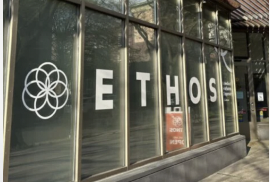Great to see yet another report / study on the issue..
HG write
Cannabis can suck large quantities of carbon dioxide from the atmosphere as it grows, but the way it’s grown can have a major negative impact on its overall carbon emissions credibility.
A new study out of Colorado State University takes a deep dive into the burgeoning industry’s carbon footprint, and the news isn’t good.
The research indicates U.S. indoor cannabis cultivation results in life-cycle greenhouse gas emissions of between 2,283 and 5,184 kilograms of carbon dioxide per kilogram of dried flower.
So, how does this stack up against outdoor and greenhouse cultivation? The researchers quote New Frontier Data’s 2018 Cannabis Energy Report that suggests 22.7 kilograms for outdoor and 326.6 kilograms for greenhouse grows.
Read full article at https://hempgazette.com/news/carbon-footprint-cannabis-hg1391/?utm_source=mailpoet&utm_medium=email&utm_campaign=newsletter
Here’s the article
The greenhouse gas emissions of indoor cannabis production in the United States
Nature Sustainability (2021)
Abstract
The legalization of cannabis has caused a substantial increase in commercial production, yet the magnitude of the industry’s environmental impact has not been fully quantified. A considerable amount of legal cannabis is cultivated indoors primarily for quality control and security. In this study we analysed the energy and materials required to grow cannabis indoors and quantified the corresponding greenhouse gas (GHG) emissions using life cycle assessment methodology for a cradle-to-gate system boundary. The analysis was performed across the United States, accounting for geographic variations in meteorological and electrical grid emissions data. The resulting life cycle GHG emissions range, based on location, from 2,283 to 5,184 kg CO2-equivalent per kg of dried flower. The life cycle GHG emissions are largely attributed to electricity production and natural gas consumption from indoor environmental controls, high-intensity grow lights and the supply of carbon dioxide for accelerated plant growth. The discussion focuses on the technological solutions and policy adaptation that can improve the environmental impact of commercial indoor cannabis production.
Full article at. https://www.nature.com/articles/s41893-021-00691-w

















